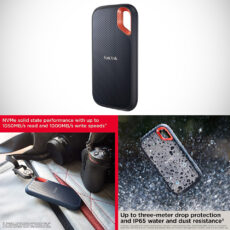
Apolskyi, a UX designer, has created a wild vision of what Google Maps would’ve looked like on a Nokia 3310 in 1999. The pixelated, black and white interface, with chunky buttons and clunky navigation, is like a time machine to the early days of mobile tech.
Building a retro interface this convincing takes serious skills and a love for old school aesthetics. Apolsky probably started with Figma or Adobe XD to map out the layout, nailing the Nokia 3310’s 84×48 pixel monochrome screen. These tools let designers lock into pixel perfect grids so every element fits the low res limits of those early displays. To get that retro look they probably used Photoshop or Illustrator to create blocky pixel fonts and icons, mimicking the high contrast no frills graphics of the time.
Sale

Motorola Moto G Power 5G | 2024 | Unlocked | Made for US 8/128GB | 50MP Camera | Midnight Blue
- 6.7″ FHD+ 120Hz display* and Dolby Atmos**. Upgrade your entertainment with an incredibly sharp, fluid display backed by multidimensional stereo…
- 50MP camera system with OIS. Capture sharper low-light photos with an unshakable camera system featuring Optical Image Stabilization.*****
- Unbelievable battery life and fast recharging. Work and play nonstop with a long-lasting 5000mAh battery, then fuel up with 30W TurboPower…
It’s not just about the tools, Apolsky had to get into the Nokia 3310’s world, which ran on a bare bones proprietary OS with barely any processing power. That meant designing within tight limits: no touchscreens, no colours, just a directional pad and number keys to work with. They might have used emulators like VICE or Nokia’s Symbian tools to test how a mapping app would work on such basic hardware. Google Maps as we know it didn’t exist in 1999 but picturing it on a Nokia 3310 takes us back to the dawn of digital maps.
The real story starts in 2004 when Google bought Where 2 Technologies, an Australian startup that was working on web based mapping. Launched in February 2005 Google Maps was a game changer, delivering smooth draggable maps in browsers while rivals like MapQuest would reload the page for every move. Powered by JavaScript and AJAX it made dragging maps feel like magic. The early version pulled data from Tele Atlas and NAVTEQ, blending street maps with satellite imagery from Keyhole, another Google buy. By 2006 Google Maps was on mobile devices with Java based apps for BlackBerry and Palm but a Nokia 3310’s setup would’ve been way out of its league.
The Nokia 3310 was a legend, famous for its tank like build and addictive Snake game. Its tiny screen and basic OS wasn’t made for mapping but mobile navigation wasn’t totally sci-fi in 1999.Garmin and TomTom were doing car GPS and phones had SMS directions and WAP browsers.
[Source]
